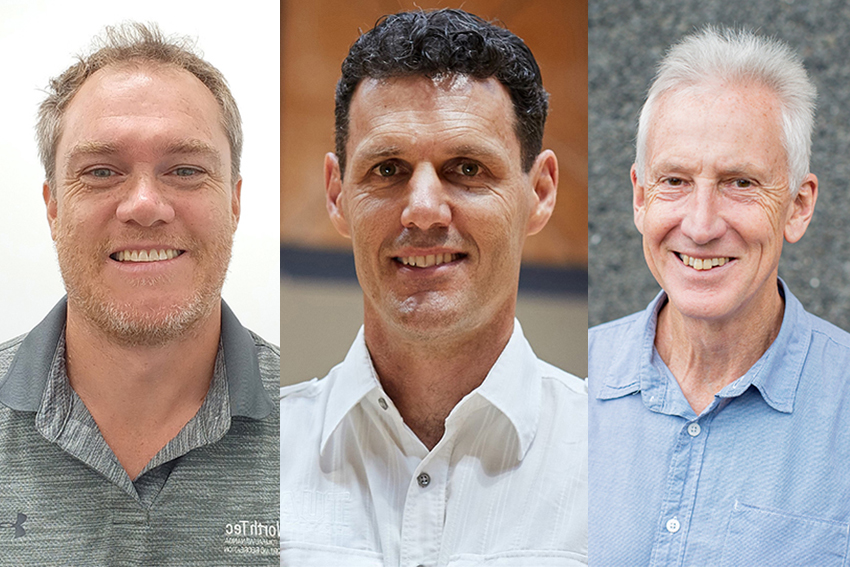Rural communities grow top athletes

Research on elite New Zealand hockey players from small-town and rural areas has produced new evidence on what can help make a top athlete.
In 2012, an ex-Swedish footballer, Rasmus Ankersen, wrote his book ‘The Goldmine Effect’, tracing his visit to different parts of the world where a disproportionate number of elite athletes were being produced. These ‘goldmines’ were not your traditional urban centres with the latest high-tech high-performance facilities, rather they were places like the Ethiopian home village where many of the world’s top endurance runners emerged. Although New Zealand did not feature in Ankersen’s book, there are regular anecdotal suggestions that rural and small-town New Zealand is potentially such a ‘goldmine’ (e.g., Google ‘Notable People from Tokoroa’).
Following this line of thinking, a study, conducted as part of an AUT Master's thesis by NorthTec Sport and recreation lecturer Bobby Newport, explored the early sport and play experiences of eight past and present elite hockey players from rural and regional communities. The study built on a previous Sport NZ study by Ken Hodge and colleagues in 2012, that explored the pathway to elite performance of 20 New Zealand athletes.
A report of the new study, published by Bobby and his academic supervisors in the journal The Qualitative Report, says New Zealand urban centres are small by global standards with a large proportion of the population living outside these centres. However New Zealand has excelled on the world sporting scene. In the 2020 Tokyo Olympics, New Zealand finished with the fourth highest medal tally per capita.
Findings extracted from player interviews revealed four dominant themes.
- They engaged in a diverse range of sports when young
- Unstructured, risky, outdoor play was a natural part of their life
- They were allowed to roam and given responsibility
- They had been surrounded by a positive motivational climate created by coaches, parents, siblings and peers.
A range of sports
From primary to secondary school, participants played a variety of sports ranging from team games such as cricket, rugby and basketball to individual pursuits such as golf, shooting and mountain biking. Attending a small school (less than 300 students) was often mentioned as a reason for this and at times, insufficient player numbers resulted in a mix of genders playing together. This was coupled with a supportive environment where participants were able to be make their own choices at an early age. Benefits from playing a variety of sports included gaining transferable skills, such as vision, hand-eye coordination, movement and footwork; and acquiring an understanding of the bigger picture of the game. They were also ‘fresh’ when they did eventually decide to focus on a main sport later.
Type of play
Most participants’ early childhoods included unstructured, outdoor and risky play such as climbing rocks and trees, making huts and catching fish or bugs. All described having “muck around” sport and play as children.
Responsibility and roaming
They reported having high levels of responsibility placed on them at an early age such as caring for animals or jobs at home or on the farm. Roaming was generally more accepted by families when children were in larger groups looking out for each other and building a sense of community at an early age.
Socio-emotional support
All acknowledged the support of their families, emotionally, financially, and through travel. Having farming parents with flexible hours helped. Support and encouragement from coaches, siblings and peers were also mentioned. The sum of these factors created a ‘motivational climate’ which supported athletic development.
The findings provide further evidence that athletes can reach representative level despite specialising later and were less prone to burnout, shortened peak performance and increased injuries. The one participant who did focus more on hockey than other sports had a very supportive environment, highlighting that the disadvantages of a primary focus on one sport can be minimised if accompanied by suitable conditions, such as enjoyment, autonomy and competency. The findings also highlight allowing children to engage in outdoor, ‘risky’ play.
Over the past few decades, there has been a trend in Western societies towards more frequent, intensive and structured sport from an early age, say AUT researchers Dr Simon Walters and Dr Chris Whatman. The study confirms international research suggesting early sampling is a viable and holistic alternative route to success.
It is part of a wider and ongoing programme of research on youth sport development by AUT’s Sport Performance Research Institute (SPRINZ) providing evidence-based insights, many of which support the Sport New Zealand “Balance is Better” philosophy. Balance is Better advocates for junior and youth sport to be about creating quality experiences for all young people to keep them active and in the game and was introduced at a time when there are concerns about falling rates of sport participation among New Zealand children.
In the Times Higher Education World University Rankings, AUT is ranked number one for research impact in Australasia.